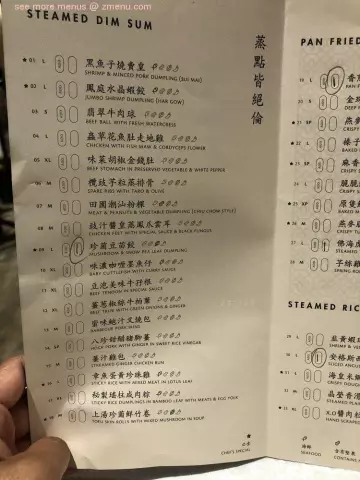- Author Rachel Wainwright [email protected].
- Public 2023-12-15 07:39.
- Last modified 2025-11-02 20:14.
Diet table 1
The famous Soviet dietitian M. Pevzner developed diets or tables used for various diseases. So, diet 1 is intended for people suffering from gastric ulcer and duodenal ulcer or gastritis.
Characteristics of the diet table 1
This diet is divided into several tables:
- Diet 1a. Provides for maximum thermal, chemical and mechanical sparing of the mucous membrane of the gastrointestinal tract, which reduces the activity of inflammatory processes and creates favorable conditions for the healing of erosions and ulcers. Diet 1a is usually prescribed in the first 6 to 8 days of exacerbation of peptic ulcer disease, as well as in acute gastritis or in the first days of exacerbation of chronic gastritis with low acidity. Food is steamed or boiled, served in pureed liquid or mushy form. Both cold and hot dishes are completely excluded. Allowed: liquid mashed milk porridge and soups with the addition of butter, steam omelet, milk, jelly, rosehip broth and weak tea. Eating every three hours. At night, be sure to warm milk.
- Diet 1b. It is prescribed after diet 1a, when the symptoms of exacerbation of peptic ulcer or gastritis begin to subside in patients. In addition to the dishes listed above, diet 1b includes white bread crackers, vegetable puree soups, steamed fish and meat patties.
- Diet table 1. This diet is prescribed to patients after the exacerbation of stomach diseases has completely subsided. It differs from diet 1b in that dishes can be cooked undisturbed.
Diet table 1: what foods are allowed?
With a diet of 1 M. Pevzner recommended that patients use the following types of products:
- Bakery products - yesterday's or dried wheat bread, uncooked and very well baked buns, biscuit biscuits, dry biscuit;
- Soups with vegetable broths, milk and cereal soups;
- Lean meat in the form of steam snacks, cutlets, meatballs, as well as boiled tongue and liver;
- Milk and dairy products (non-acidic kefir, fresh pureed cottage cheese, a little sour cream);
- Steam omelet or soft-boiled eggs;
- Cereals - rice, semolina, buckwheat, oatmeal. They can be used to make puddings, soufflés, steamed cutlets, cereals and soups.
- Pasta;
- Vegetables: cauliflower, beets, potatoes, carrots, ripe tomatoes, pumpkin, zucchini. Diet 1 recipes call for these vegetables to be boiled or steamed. With diet 1a, vegetables are excluded, and with diet 1b, they are served mashed.
- Snacks. As appetizers in the diet of table 1, you can use boiled liver pate, boiled tongue, sturgeon caviar, lean and well-soaked herring. Allowed salads from boiled vegetables with the addition of boiled chicken breast or lean beef. You can eat a small piece of mild cheese no more than once a week.
- Sweet dishes - baked or boiled fruits and berries, compotes, jelly, mousses, marshmallows, marshmallows, honey and sugar.
- Fats - Butter and vegetable oils added according to diet 1 recipes in ready-made meals.
- Drinks - rosehip broth, weak cocoa with milk, weak tea, sweet fruit juices.
What foods should not be used on diet table 1?

If you suffer from gastric ulcer or duodenal ulcer and you have been prescribed a medical food - diet table 1 according to Pevzner, then you must abandon all products that enhance the secretory function of the stomach. These include:
- Rye bread, as well as any fresh baked goods, pastries, puff pastry products;
- Meat and mushroom broths, rich vegetable broths;
- Lean or fatty meat;
- Salted and / or fatty fish, as well as canned fish;
- Dairy products with high acidity, salty and spicy cheeses;
- Fried or hard-boiled eggs;
- Some types of cereals (corn, barley, pearl barley, millet);
- Legumes;
- Mushrooms, cucumbers, spinach, sorrel, radish, rutabagas, turnips, white cabbage.
- Smoked meats, spicy and salty snacks;
- Insufficiently ripe fruits and berries, not mashed dried fruits;
- Ice cream, chocolate;
- Pepper, mustard, horseradish;
- Kvass, carbonated drinks, black coffee, strong tea.
Diet recommendations table 1
In order to remember which foods you are allowed and which are prohibited, the easiest way is to use the pivot table for diet 1, which you can download from the Internet or make yourself. It includes several columns. The first of them indicates the general name of any food, for example "Vegetables". The second column marks those that you can use, and the third - those that you should refuse. Diet table 1 helps to greatly facilitate the correct organization of nutritional therapy.
Diet 1 recipes involve cooking either steamed or boiled. During an exacerbation of peptic ulcer disease, they are served in mashed form.
Not all patients tolerate milk well, the consumption of which with diet 1 should be about 5 glasses a day. In this case, it is allowed to mix milk with weak sweet tea.
Eating should be frequent and small. Foods that are too hot or too cold should not be consumed.
As practice shows, adherence to diet 1 in two weeks leads to a noticeable improvement in the health of patients. But, like any other method of treatment, diet table 1 requires a certain consistency and self-discipline from them. Violation of the principles of medical nutrition, as well as the use of prohibited products until the end of the full course of treatment, almost immediately leads to the appearance of a discomfort and pain in the stomach.
Found a mistake in the text? Select it and press Ctrl + Enter.






